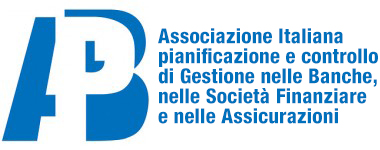“The new normal” in banking – Perspectives for regulators
Dr Andreas Dombret
Member of the Executive Board of the Deutsche Bundesbank
Frankfurt am Main | 15.11.2016
- 1 “The new normal” in banking – orientation through regulation?
- 2 Is the regulatory framework appropriate from a risk perspective? The case of real estate loans
- 3 Risk sensitivity as a measure for the conclusion of negotiations
- 4 Outlook for Basel III
1 “The new normal” in banking – orientation through regulation?
Ms Danièle Nouy
Vice-President Sabine Lautenschläger
Ladies and gentlemen
The “new normal” is the big topic of this year’s Euro Finance Week here in Frankfurt.
To me, the term “new normal” carries negative undertones. It reminds us that many aspects of banking business – from the relationship between a bank and its customers, via political risks, to sources of income – have changed, all at the same time – and for good. This can certainly engender frustration and fear.
Still, I don’t believe that change and uncertainty, in themselves, are necessarily a cause for complaint. After all, they are the foundations of economic activity in general, and of banking business in particular. But, as so often in life, it is a matter of degree. What many people undoubtedly want from banking business’s new normal is an adequate amount of orientation.
Banks and savings institutions want orientation for regulation, as well. All eyes are now on Basel III. Two essential questions arise today: what is the current status of the reforms? And what can we regulators do to provide banks with suitable orientation for the “guide rails” of banking business?
Allow me to make a preliminary remark. In my opinion, there is no such glaring conflict between banks and regulators about the need for a planning horizon. The Basel Committee central bank governors have specified the timeframe in good time and stipulated that capital requirements should not increase significantly overall. Such a voluntary commitment surely did not and does not make the Committee’s job any easier. But it gives the institutions some orientation and helps them to establish a planning horizon. Financial institutions receive clear guidelines through a globally harmonised regulatory framework which sets incentives for careful bank management while being, at the same time, as simple as possible. For me, that is the essential principle of the forthcoming Basel reforms.
Where do we stand today? The Basel Committee’s all-important meeting in Santiago is just over two weeks away, and I think we’ve already made good progress; but that certainly doesn’t mean we’ve reached our destination. We still have to bring three objectives of the Basel reform package into alignment.
- First, we wish to reduce excessive fluctuations in the calculation of risk-weighted assets by internal models;
- second, we wish to hold onto risk sensitivity;
- and third, the new rules must not lead to any significant increase in the currently applicable overall capital requirements.
From today’s perspective, I think these three objectives could well be at risk. Felix Hufeld expressed a similar opinion. This is because provisional impact assessment studies point to a significant increase in overall capital requirements. There is, therefore, definitely some latitude for lowering requirements. We have pledged to use this latitude. And we should use it in such a way that it will serve the goals I have just mentioned.
From a German perspective, there are two essential areas of action for the negotiations at the end of November.
- First, preservation of internal credit risk models, and therefore of a risk-sensitive approach – even at the cost of constraints resulting from input floors;
- and second, not introducing an output floor.
2 Is the regulatory framework appropriate from a risk perspective? The case of real estate loans
Let me explain the first point by taking the example of real estate loans – a topic that is particularly dear to us in Germany. Real estate loans are an important business area – worldwide. Even a high level of property collateral cannot rule out losses in the credit business. To what extent should banks therefore be allowed to claim collateral as being risk-mitigating when calculating their regulatory capital? A typical approach is to take the market price of the collateral. But market prices are, of course, prone to overvaluations and price bubbles. The regulatory framework should take such risks into account. In Basel, there is a clear consensus on this matter.
In some countries, such as Germany, additional risk-mitigating rules are in place. For example, banks and savings banks are obliged to apply conservative value calculations when valuing real estate. These are more cautious and less volatile than valuations based on the market value. They have led to very low loss rates for as long as they have been in place. In other countries in Europe and the rest of the world, less restrictive valuation standards are often used.
The Basel Committee would now like to see all valuation methods being treated equally. We, as the German supervisory authority, will be objecting to this proposal in the Basel negotiations, as this would distort global and regional competition. Furthermore, each institution would feel penalised for making a contribution towards ensuring a more cautious management of the financial risks resulting from property finance.
What, then, needs to be done? In the case of real estate loans, we want the Basel framework to take due account of reliable data series on low loss ratios, as they result from conservative valuation methods in Germany.
This, of course, affects all methods of calculating regulatory capital for credit risks. Above all, internal models are already able to convert data on low loss ratios into low risk weights. We therefore call for the following.
- First, the Basel Committee should apply far fewer restrictions to the advanced approach, A-IRBA[1], than originally intended.
- Second, the input floors, ie the restrictions on model parameters, which are estimated using loss data, should not be set as high as in the current proposals.
- Third, the same logic applies to the F-IRB[2], a less comprehensive internal model in which certain loss ratios are already stipulated by regulation. The Bundesbank therefore proposes that the capital requirements should be lowered when both the institutions and the supervisors can provide reliable past data on low losses and stable markets. This method is known among experts as the hard test.
- Fourth, the hard test should be kept in the standard approach for calculating credit risks.
3 Risk sensitivity as a measure for the conclusion of negotiations
Ladies and gentlemen, as part of the negotiation process, the Bundesbank is committed to ensuring that these regional differences are given due consideration. At the end of the day, the ultimate objective of the reforms needs to be ensuring the risk sensitivity of the framework, meaning that the capital requirements reflect the actual risks of an institution as accurately as possible. For the Basel Committee, this also means looking at more than just the global average increase in capital requirements and focusing on a regional balance as well. The German representatives in Basel are not alone in this quest, but work in close cooperation with other negotiating parties. We are grateful to have the strong support of the ECB on this matter. That is why I am very pleased that Danièle Nouy will be giving the Dinner Speech tonight.
Specifically, we will be bringing the following points to the negotiations.
- The supervisory LGD under F-IRBA needs to be reduced from 45% to 40%.
- The scaling factor of 1.06, a remnant of the Basel II rules, should also be abolished.
- The Bundesbank is against the general implementation of an output floor. In theory, it acts as a way of putting a stop to the frivolous calculation exercises associated with using internal models. In practice, however, it works against the focus on risk. This is something we’re not prepared to accept. We have no interest in banks taking on additional unwanted risks. Basel III has developed other instruments, such as the leverage ratio, to fight against risks of modelling and misuse.
- Internal models for calculating operational risks, known as AMAs, should be done away with as planned and an appropriate standard solution used instead.
4 Outlook for Basel III
Though there is still much work to be done in Basel, before I close, I’d like to take this opportunity to emphasise just how much progress has already been made at the Basel Committee meetings thus far. The changes that are yet to be implemented likewise need to align with the original objectives – they should adequately cover risks and set the right incentives, for example.
In summary, we mustn’t lose sight of how valuable an international agreement like Basel III can be. It combats regulatory arbitrage and the shifting of risks. Beyond the regional level, effective international standards are in everyone’s interests. In this way, Basel sets the standard for effective international cooperation that benefits everyone.
That is more important than ever. Currently, we are seeing many citizens calling our globalised world into question, with more and more looking for answers in separation or regionalisation. I very much hope that with the new administration in the United States, the cooperation on the Basel Committee will continue to be based on mutual trust. It must be said, however, that the Bundesbank is not prepared to reach an agreement at any price.
Thank you for your attention.
Footnotes:
- Advanced internal ratings-based approach
- Foundation internal ratings-based approach
Deutsche Bundesbank
Communications Department
Wilhelm-Epstein-Straße 14, 60431 Frankfurt am Main, Germany
Internet: www.bundesbank.de | E-mail: info@bundesbank.de
Tel: +49 69 9566-0 | Fax: +49 69 9566-3077
Reproduction permitted only if source is stated.


